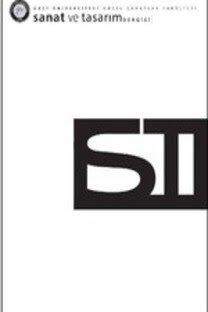Biyoiktidar Kavramı ve Ötekileştirmenin İki Kadın Karakterde Temsili "Meryem Ana ve Berfo Ana"
Bu makalede iki imge, iki kavram ile birlikte ele alınmaktadır. İki kadın imgesinden biri, 2000 yıl öncesinde yaşayan Mesih İsa’nın annesi Meryem Ana diğeri ise; 12 Eylül 1980 askeri darbe dönemi sonrasında gözaltında kaybedilen, işkenceden geçirilen, öldürülen evlatlarının akıbetini sormak için bir araya gelen bir “Cumartesi Annesi”; Berfo Ana. Meryem Ana ve kucağında ölü İsa anlamına gelen “Pieta”, sanat tarihi boyunca acı çeken, haksızlığa uğrayan, katledilen kadın ve çocukların sembolü olmuştur. Gözaltına alındıktan sonra kaybolan ve kendisinin izine karakolda, hapishanede hiçbir yerde rastla- namayan oğlunu arayan Berfo Ana, oğlunun akıbetini öğrenmek için verdiği mücadeleyle sembol olmuş bir Cumartesi annesidir. Kavramlar ise “biyoiktidar” ve “ötekileştirme”. Foucault, biyoiktidar’dan bir iktidar teknolojisi olarak söz eder. İktidarın tek tek bedenler üzerinden toplumu disipline ettiğini ve kontrol ettiğini söyler. Ötekileştirme, iktidarın çoğunluğu baskı altında tutmak için toplumu kategorize ederek belli sınırlar içerisine alması ile dayattığı parçalanmışlıktır. Bu durum “öteki”nin reddine, linç edilmesine, yok edilmesine kadar gidebilir. Tıpkı Mesih İsa ve Berfo Ana’nın oğlu Cemil’e yapılanlar gibi. 17. yüzyıldan itibaren ortaya çıkan ancak Foucault tarafından 20. yüzyılın sonların- da yeni bir iktidar biçimi olarak temellendirilen“biyoiktidar” kavramı, bedeni yönetmeyi seçen yeni bir tahakküm biçimi olarak günümüzde varlığını yoğun bir şekilde hissettirmektedir. Bu makalede biyoiktidarı, iki kadın karakterin yaşadıkları ötekileştirmeyi imge üzerinden sürmeye çalışacağız.
Anahtar Kelimeler:
Orta Çağ, Resim Sanatı, Grotesk, Mehmed Siyah Kalem
The Concept of Biopower and Othering in the Representation of Two Female Characters "Virgin Mary and Berfo Ana"
In this article, two images, together with two concepts are discussed. The two images are the two female characters. Mary, the mother of Jesus Christ who lived 2000 years before and the other one is Berfo Ana whose son Cemil tortured and killed during the period of September 12, 1980 by the military coup detainees. Berfo Ana and other mothers come together every Saturday to ask about their lost sons. They are called as “Saturday Mothers”. Pieta: refers to the Virgin Mary holding the dead Christ in her arms. Pieta, throughout the history of art, has been the symbol for suffering, oppressed and murdered women and children. Berfo Ana is looking for her son everywhere. Her son after taken into custody was disappeared and his trace was not found neither in any police station nor any prison. Berfo Ana is a Saturday Mother who has become a symbol with her struggle to learn the fate of his son. “Biopower” and “othering” will talk about concepts. Foucault mentions about biopower, as a technology of power. He says; power disciplines and controls crowds through individual bodies. Othering is a fragmentation imposed by the power. The power in order to oppress the majority categorizes the society in borders. This process may end up with the denial, lynch even destruction of the “other”. Just like what happened to Jesus Christ and to Cemil the Berfo’s son. The Biopower; emerged since the Seventeenth Century as a new form of power as stated by Focoult in the late Twentieth Century has chosen managing through bodies. The “Biopower” concept as a new form of domination shows it presence intensively in the present time. This article traces the biopower and the othering the two female characters exposed to through concept.
Keywords:
Biopower Othering, Pieta, Saturday Mothers, The Virgin Mary.,
___
- Vikipedi; tr.wikipedia.org/wiki/Pietà
- Vasari, Giorgio: En Mükemmel Ressamların, Heykeltıraşların ve Mimarların Hayatları, Londra: Penguin, 1987, s. 26.
- www.alka.com.tr/alphtml/miche/resimler_3.html
- Alpkaya, Gökçen, “Kayıp”lar Sorunu ve Türkiye, Ankara Üniversitesi Siyasal Bilgiler Fakültesi, Cilt: 50, Haziran-Aralık 1995
- Usta, Bülent, Birgün Gazetesi, 7 Ekim 2009
- Bozdağ, Lütfiye, “Sanatta Sansür ve Otosansür Yaygınlaştı” 26 Ocak 2012 Perşembe, muhalefet.org
- Kaptanoğlu, Cem,
- http://iys.inonu.edu.tr/webpanel/dosyalar/477/file/beden/Politik-Beden.ppt, 14.06.2013,
- Tanrıkulu, Nimet, http://www.tr.boell.org/downloads/nimet_tanrikulu_1._sayi_tr.pdf
- Altıparmak, Kerem; Kayıplar, Zaman ve Hukuk, Ankara Üniversitesi Siyasal Bilgiler Fakültesi İnsan Hakları Merkezi Ka- yıplar -diyaIog -EYLÜL - EKİM 2009 Sayısı, http://e-kutuphane.ihop.org.tr/pdf/kutuphane/22_81_0000-00-00.pdf
- İnsel, Ahmet, Politika / 24/01/2012 tarihli Radikal gazetesi
- İstanbul - BİA Haber Merkezi, 30 Kasım 2012, Cuma
- İnsan Hakları Derneği Diyarbakır Şubesi, Türkiye’de Toplu Mezarlar Raporu, 21 Eylül 2011
- Gündüz, Özkan,yayın tarihi, 04/12/2012, http://www.toplumsaldevrim.com/guncel/berfo-ana-ozkan-gunduz ,12.12.2013
- Gauchet, M. “Anlam Borcu ve Devletin Kökenleri. İlkellerde Din ve Siyaset”. Devlet Kuramı, Dost kitabevi, 2000, Ankara.
- Foucault, Michel; Büyük Kapatılma-Arka kapak yazısından, Ayrıntı Yayınları, 2011
- İstanbul - BİA Haber Merkezi-25 Ocak 2005, www.bianet.org
- ISSN: 1308-2264
- Yayın Aralığı: Yılda 2 Sayı
- Başlangıç: 2015
- Yayıncı: Ankara Hacı Bayram Veli Üniversitesi
Sayıdaki Diğer Makaleler
Dil ve Müziğin Karşılaştırılması
İşitme Engelli Gençlerde İş Başvuru Dosyası Geliştirme Çabalarının İncelenmesi: Eylem Araştırması
Orta Çağ'ın Grotesk Dünyası ve Mehmed Siyah Kalem'in Demonları
Biyoiktidar Kavramı ve Ötekileştirmenin İki Kadın Karakterde Temsili "Meryem Ana ve Berfo Ana"
Modernizim Sonrası Alternatiflerinden: Feminist Söylem ve Batılı Sanatçılar
